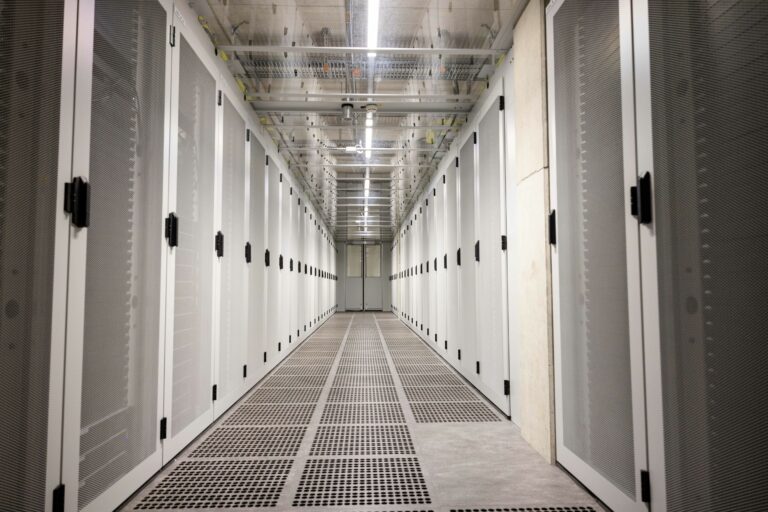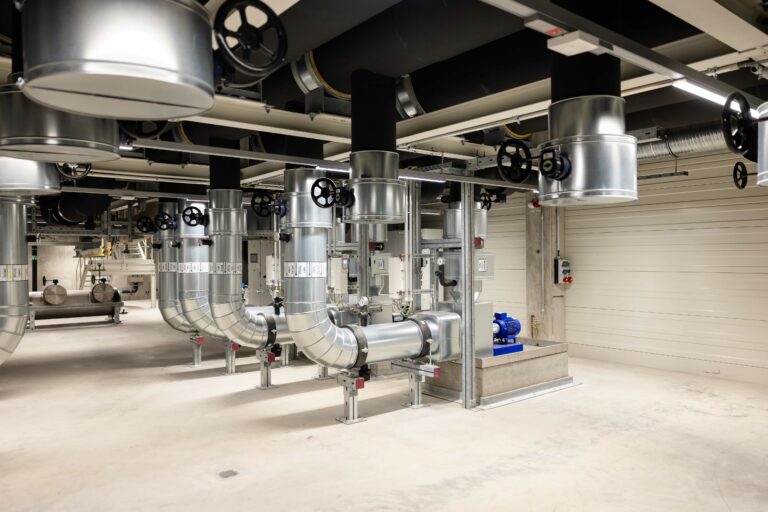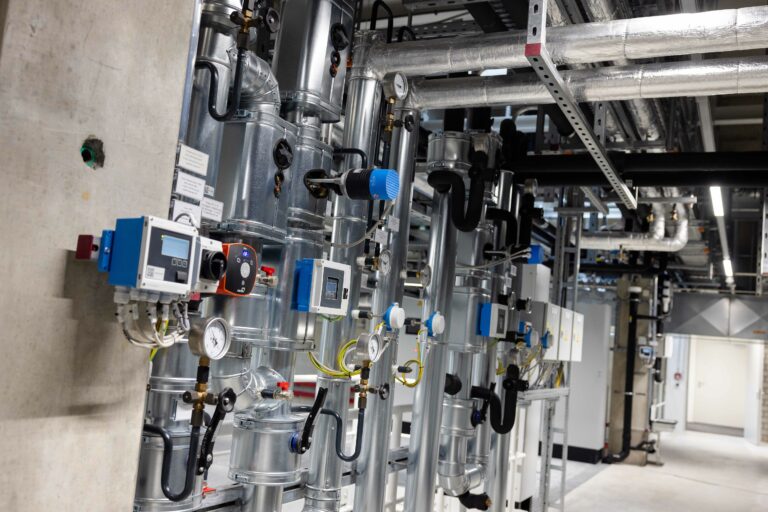incampus
Reno-sTES in Germany
A former refinery site in Ingolstadt’s commercial district is transforming a 75-hectare R&D campus, featuring up to 70 non-residential buildings. The ongoing first construction phase (2021-23) includes structures providing working space for 1,400 people, with three additional construction phases planned over the next decade. This district serves as a notable showcase for the modernization of the car industry, showcasing a mix of buildings and a visitor centre highlighting the site’s development milestones. It also exemplifies successful land transformation, involving the redevelopment of brownfields and existing structures through collaboration between public and industrial partners.
The energy supply is planned to be low-carbon, and an uninsulated LowEx grid (5-30°C) is built up for controlled thermal energy distribution of decentralised sources and sinks. Due to its high volume (currently ~2,200 m3), this grid itself provides storage capable of balancing out and shifting thermal loads. Experienced project partners have previously collaborated in a theoretical analysis of the potential to reuse existing former ground-based concrete structures that served as fire extinction basins and water purification basins. In that sense, INTERSTORES will integrate the basins as sTES in the evolving energy system becoming Germany’s largest combined multi-sTES (volume max. 29,000 m3).
In 2023, INC prepared basins A+B as WGTES and connected them to the LowEx grid. Basins A+B will be transformed into in-ground, fully sealed, fully insulated water-gravel sTES, which is indirectly charged and discharged via plastic coils.
INTERSTORES targets
IN-Campus demo site as Reno-sTES at Ingolstadt (Germany)
In-Campus goals
In-Campus demo site is expected to be district regional Reno-sTES with LowEx temperature conditions, with a final stage volume of 29,000 m3 and a projected capacity of 806 MWh.
The projected efficiency is 85% with a usable capacity of 685 MWh.
In the In-Campus type of facilities, it is predicted to reduce CO2 emissions by 86 t per annum, with the expected growth of Reno-sTES types of facilities in a five-year period up to 100.










